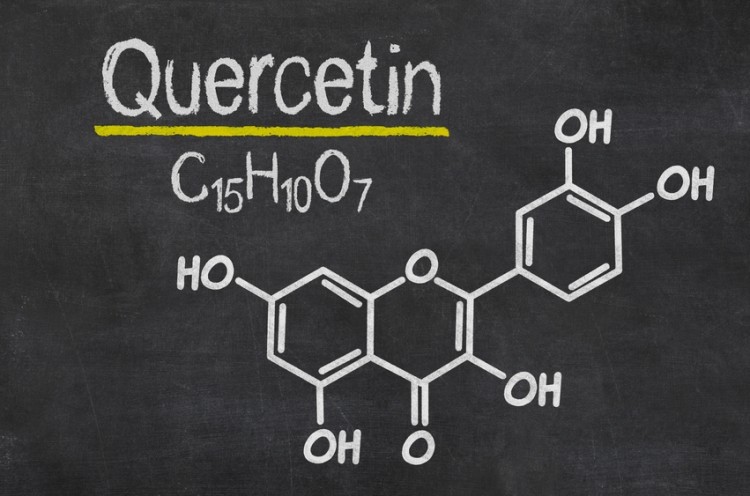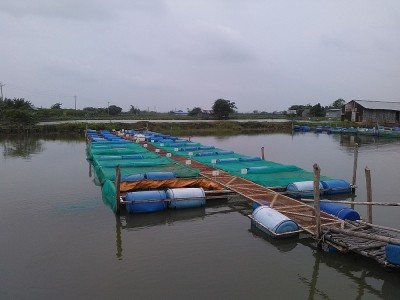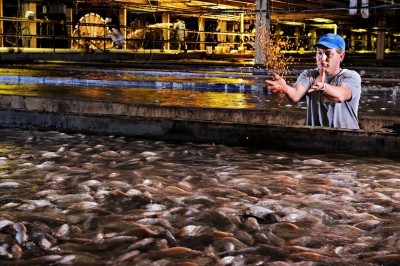Researchers hit on antioxidant to boost immunity in catfish

A team of researchers from Latin America are exploring ways to improve catfish production. The group published their work on feed ingredient, quercetin, in the journal Aquaculture.
“Silver catfish (Rhamdia quelen) has potential for aquaculture in southern Brazil due to its elevated growth rate, good carcass yield and easily controlled reproduction in subtropical climate ( Baldisserotto, 2009),” said the researchers. “The current study aims to examine the effect of quercetin on blood parameters, oxidative biomarkers and pituitary hormone expression in R. quelen.”
The group found that the treatment did not alter the blood chemistry of fish, but improved antioxidant responses, members said.
“Our results suggests that supplementation of silver catfish diet with quercetin is beneficial since it reduced the LPO [lipid peroxidation] and increased antioxidant capacity in vital tissues of fish without having any impact on hematological and biochemical parameters, and on pituitary hormone gene expression,” they said.
Why quercetin?
Quercetin is a naturally produced flavonol found in several fruits, vegetables and nuts, noted the authors. In previous studies with other species, the ingredient was found to alter rats’ hypothalamic adrenal axis and was linked to stress reduction and reduced cortisol levels, they said.
“This flavonoid is also described as an exceptional scavenger of free radicals such as peroxynitrite and hydroxyl radical (Bors et al., 1994 and D'Andrea, 2015),” said the researchers. “This evidence supports the study of quercetin as a potential natural antioxidant to be incorporated in fish diet.”
And farmed fish can be subject to a constant state of stress or stress factors, which generate interest in feed additives that can boost performance, immune function or fillet quality, said the researchers. Increased stress often results in poor health for the fish.
“Aspects such as water quality, culture density, feeding, nutritional conditions, and handling procedures directly influence these hormonal pathways (Suárez et al., 2015),” they said.
Stressors also can trigger an endocrine response in farmed fish that raises the secretion levels of catecholamines like epinephrine or norepinephrine and cortisol, said the researchers. The increased production of those hormones also can generate secondary effects like a rapid use of energy reserves.
Farm conditions also may alter the expression of growth hormones that play a role in physiological processes, they said, and they may promote excessive reactive oxygen species (ROS) formation.
“Increased ROS levels can potentially damage cellular components, promoting lipid peroxidation (LPO), enzyme inactivation and oxidative DNA damage ( Cho and Lee, 2012 and Saleh et al., 2015),” they said.
Changes in farming practices for raising fish could improve fish welfare, said the researchers. The addition of natural antioxidants to the diet also may reduce production costs and provide an alternative to synthetic compounds.
The study
Fish were given trial diets including three levels of quercetin – 0, 0.15 and 0.30% - for a period of 21 days, said the researchers. Fish were assigned randomly to one of nine boxes with diets tested in triplicate and had a two-week acclimation period.
The quercetin used in the diets was a commercial product, they said. “The diet consisted of 30% soybean meal, 35% meat and bone meal, 12% rice bran, 15% corn, 3% canola oil, 1% salt, 3% vitamins and minerals (premix) and 1% phosphate dicalcium,” they added.
Blood samples were collected on day 21, they said. Fish were harvested and pituitary brain, gill, liver, kidney and muscle samples were taken.
Blood was checked for hematocrit (HCT), they said. Plasma was used for a biochemical analysis and checked for cortisol levels, glucose (GLU), lactate dehydrogenase (LDH), triglycerides (TRI), cholesterol (CHO), low- and high-density lipoprotein cholesterol (LDL, HDL) and urea (URE).
Tissues were checked for stress biomarkers, protein content, superoxide dismutase, catalase, glutathione peroxidase, non-protein thiols, total reactive antioxidant potential and ascorbic acid content, they said.
Results
There were no significant changes in hematological or biochemical parameters for the fish getting the trial diets, said the researchers.
“Diets containing different quercetin concentrations did not exert any significant effect on the HCT, HB [hemoglobin concentration] and MCHC [mean cell hemoglobin concentration] in whole blood,” they said. “Compared with the control group, plasma levels of cortisol, GLU, LDH, TRI, CHO, LDL, HDL and URE did not differ among the experimental groups.”
However, fish getting the dietary supplement had a reduction in lipid peroxidation in the tissues evaluated, they said. Activity of several antioxidant enzymes including superoxide dismutase, catalase, glutathione peroxidase and glutathione S-transferase was improved for those fish.
“Decreased LPO levels observed in our experiments indicate an important antioxidant effect of quercetin, said the researchers. “The quercetin action could be attributed to the chain-breaking action of this compound in the free radical formation and consequent prevention of membrane oxidation (Bischoff, 2008).”
Fish getting the trial diets also saw higher levels of non-protein thiols, total reactive antioxidant potential and ascorbic acid, they said.
No changes were found in cortisol levels or the expression of growth hormone, prolactin or somatolactin, in fish getting the supplemented feed, said the researchers.
Source: Aquaculture
Title: Quercetin in the diet of silver catfish: Effects on antioxidant status, blood parameters and pituitary hormone expression
DOI: 10.1016/j.aquaculture.2016.02.020
Authors: Tanise S. Pês, Etiane M.H. Saccol, Giovana M. Ourique, Érika P. Londero, Luciane T. Gressler, Jaqueline I. Golombieski, Werner G. Glanzner, Susana F. Llesuy, Paulo B.D. Gonçalves, João Radünz Neto, Bernardo Baldisserotto, Maria A. Pavanato,















